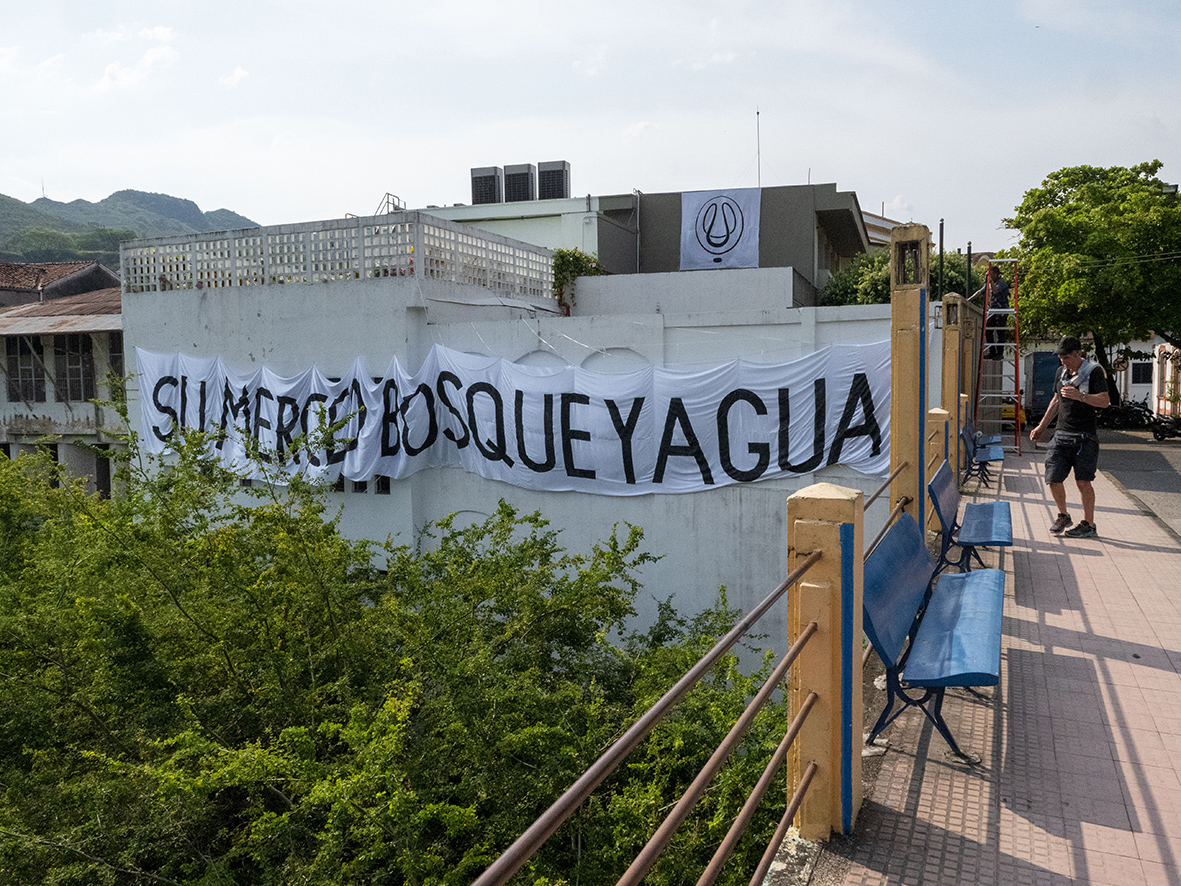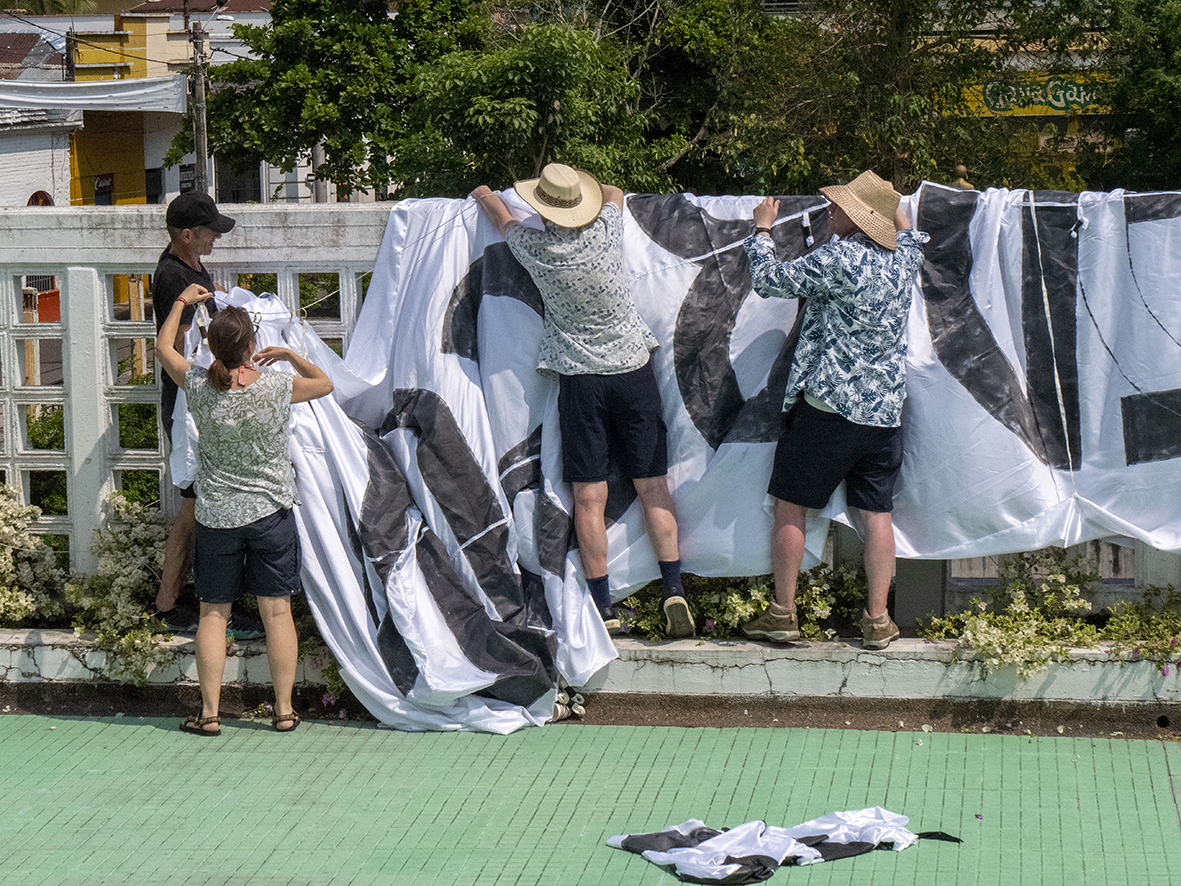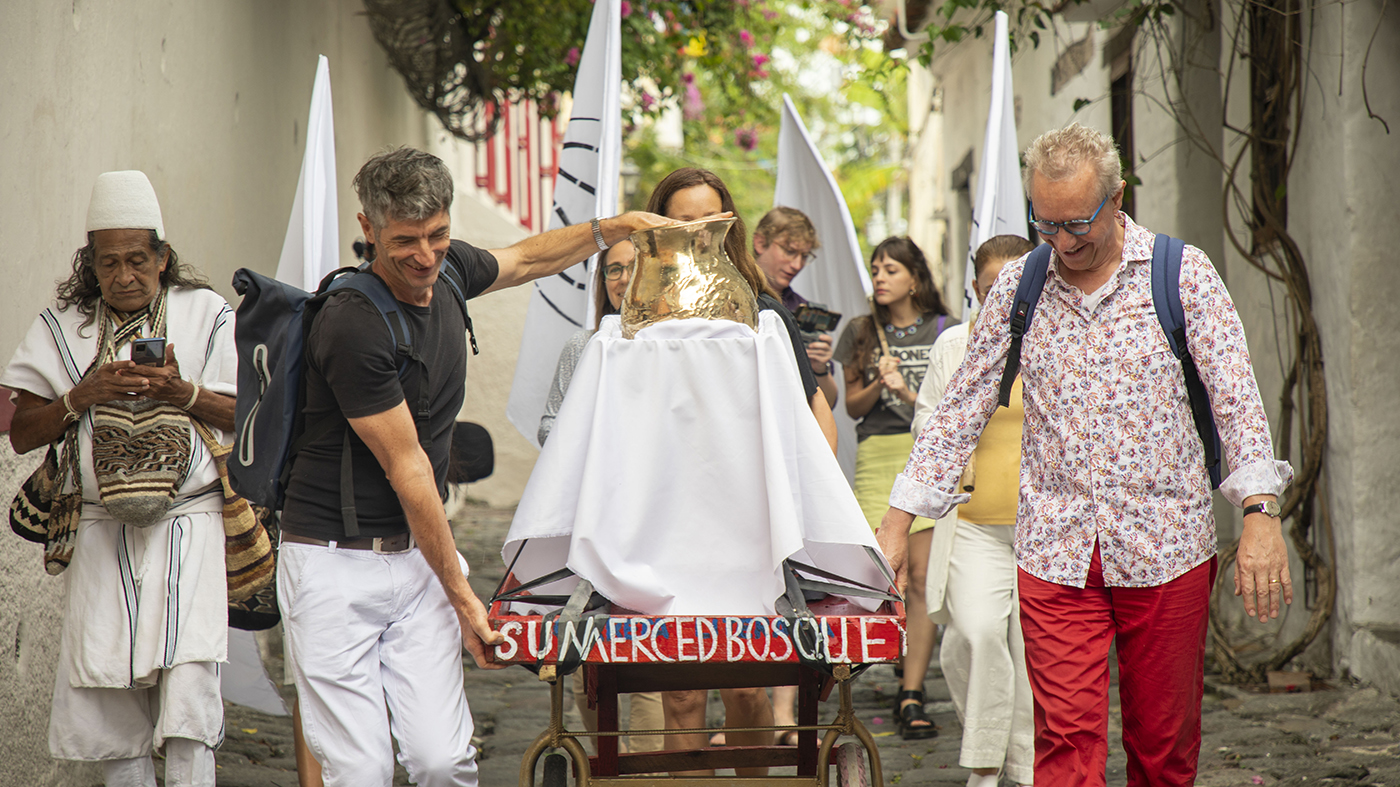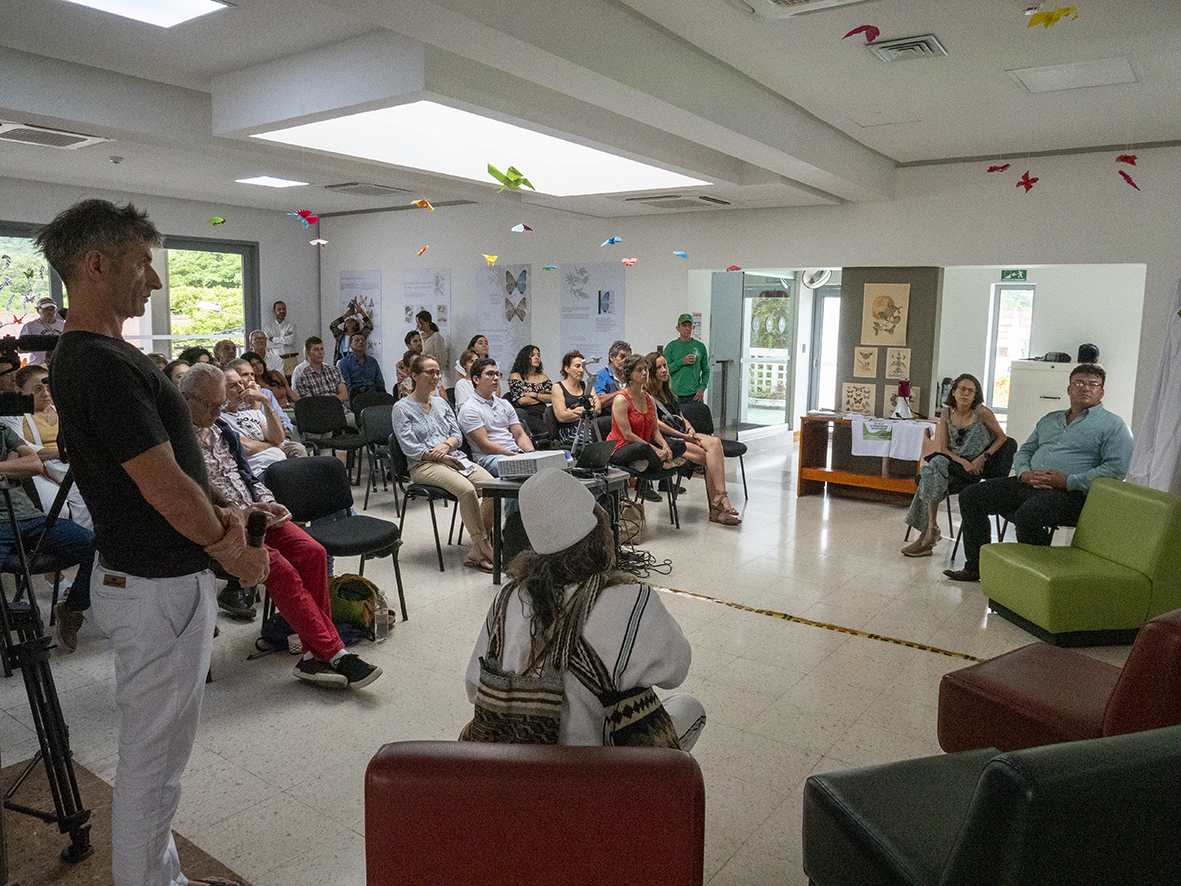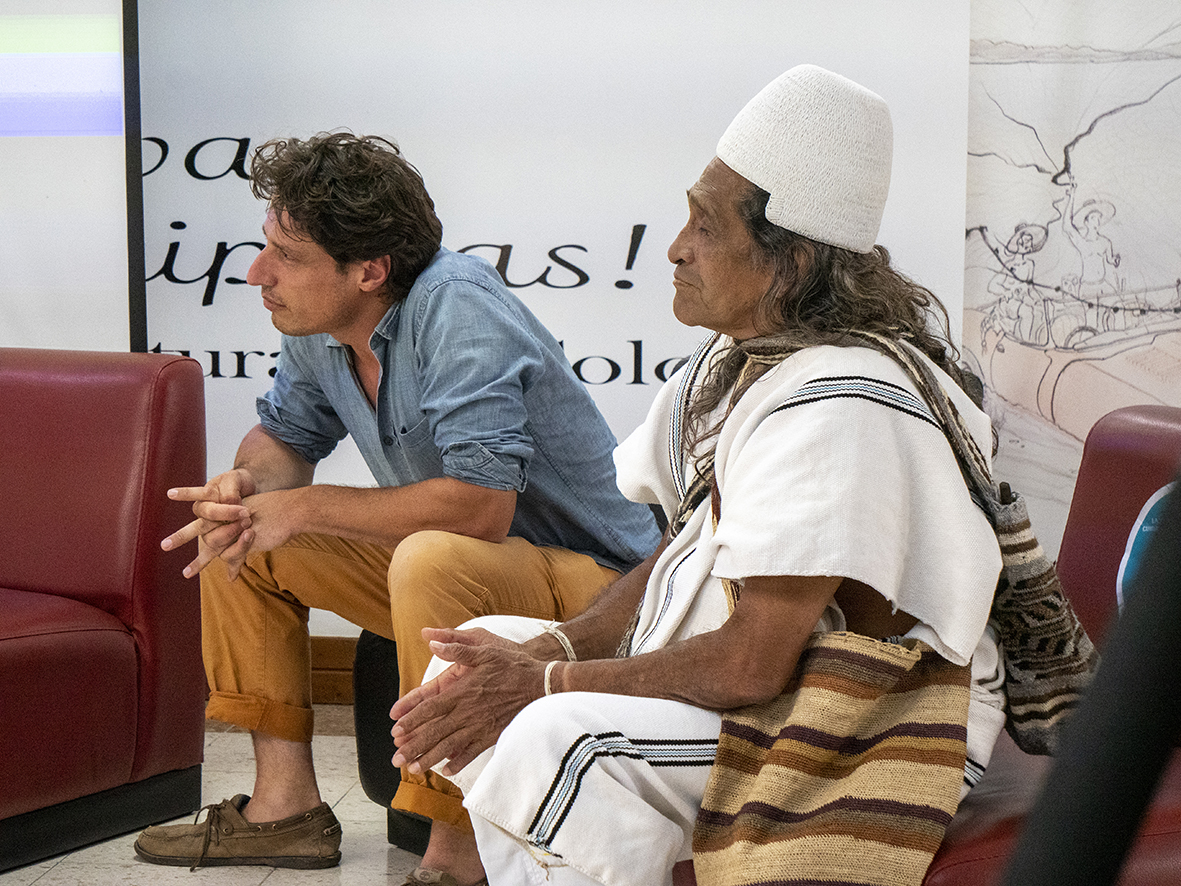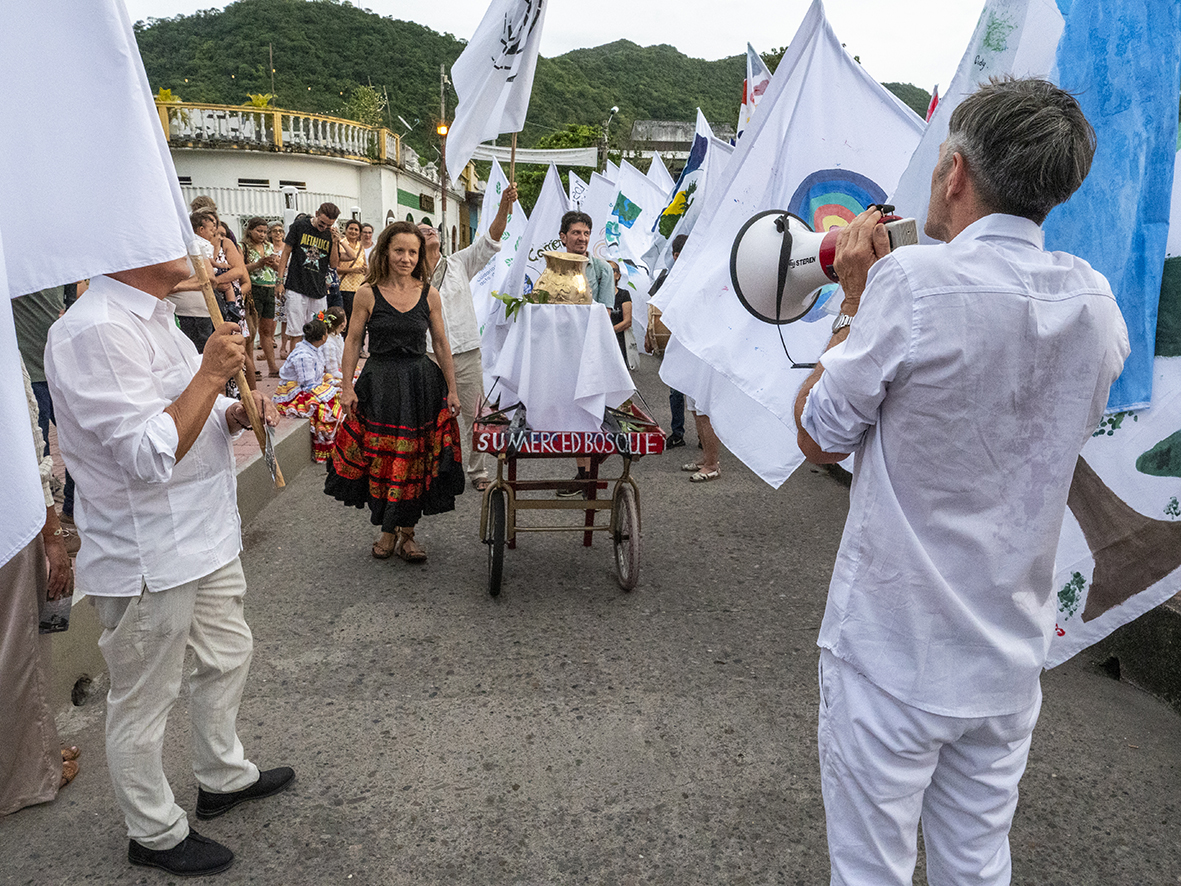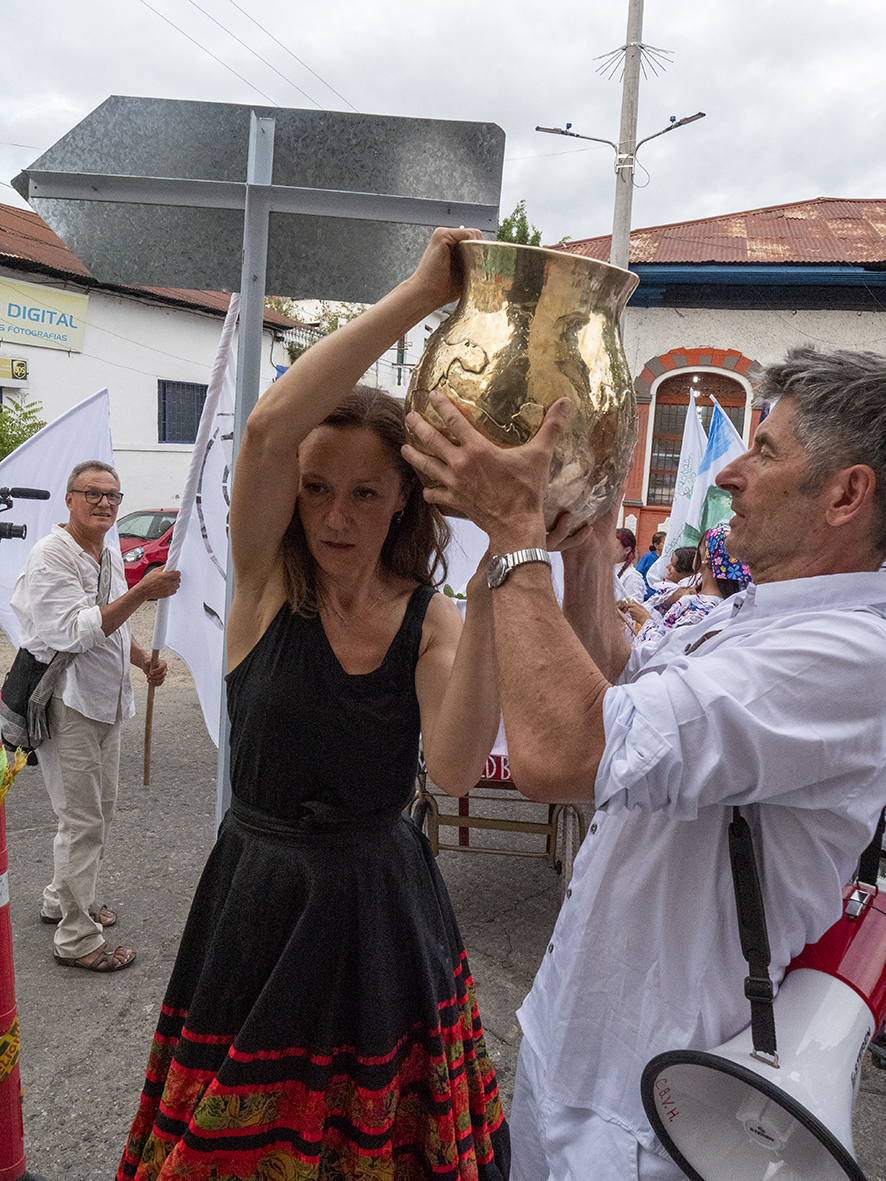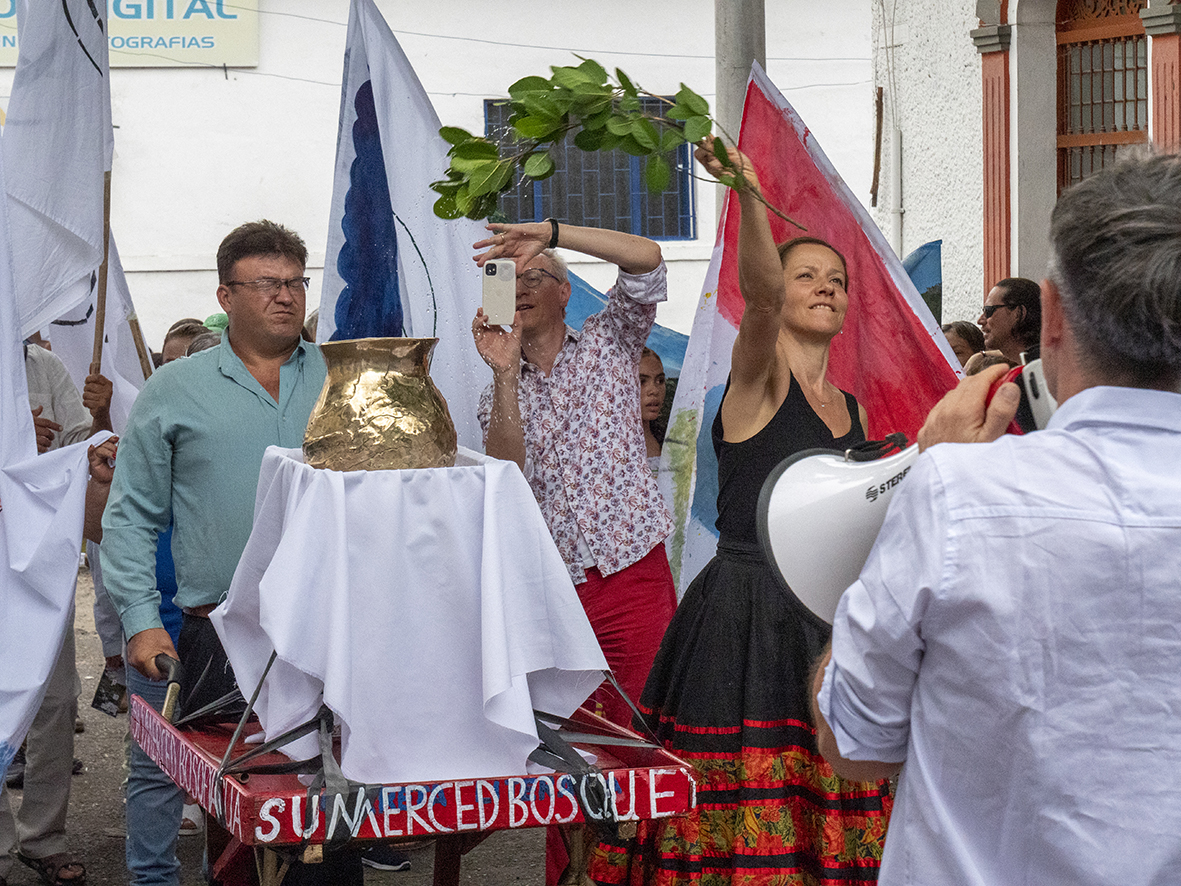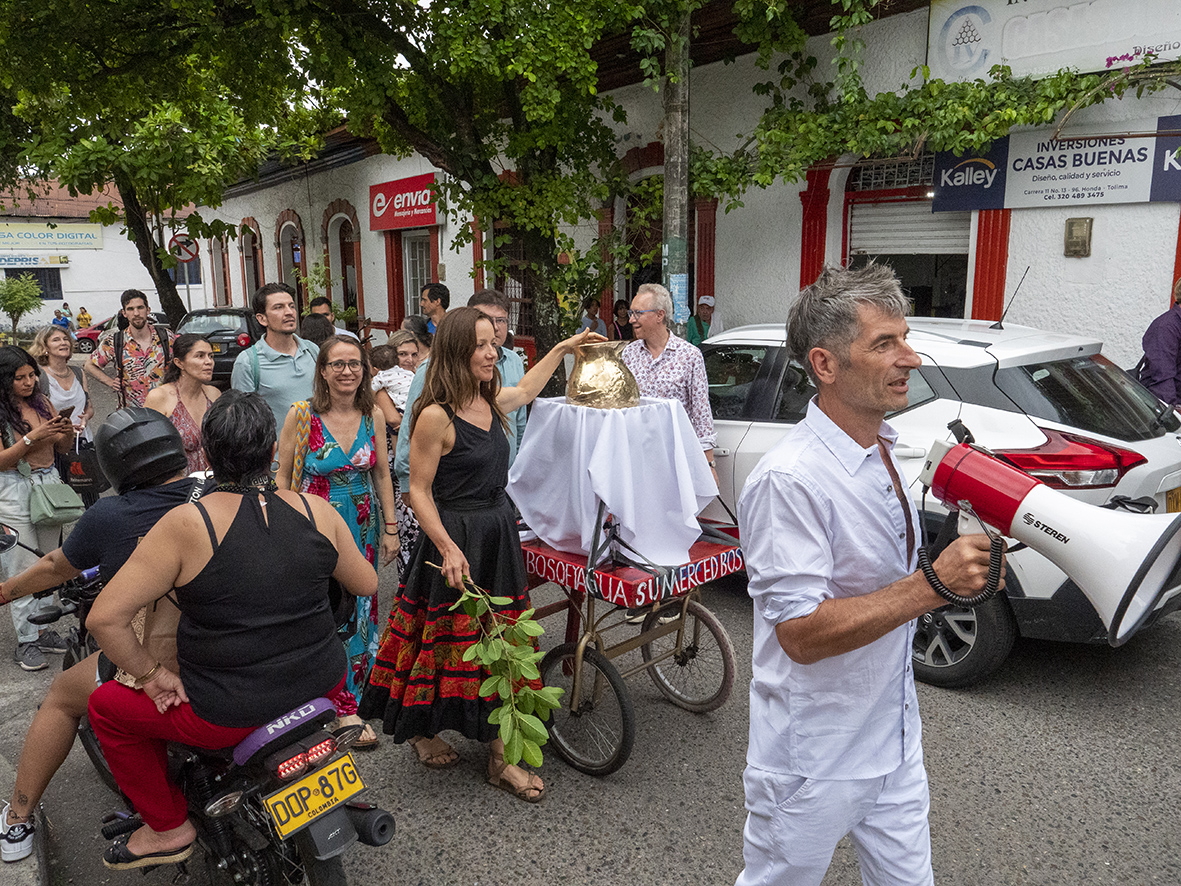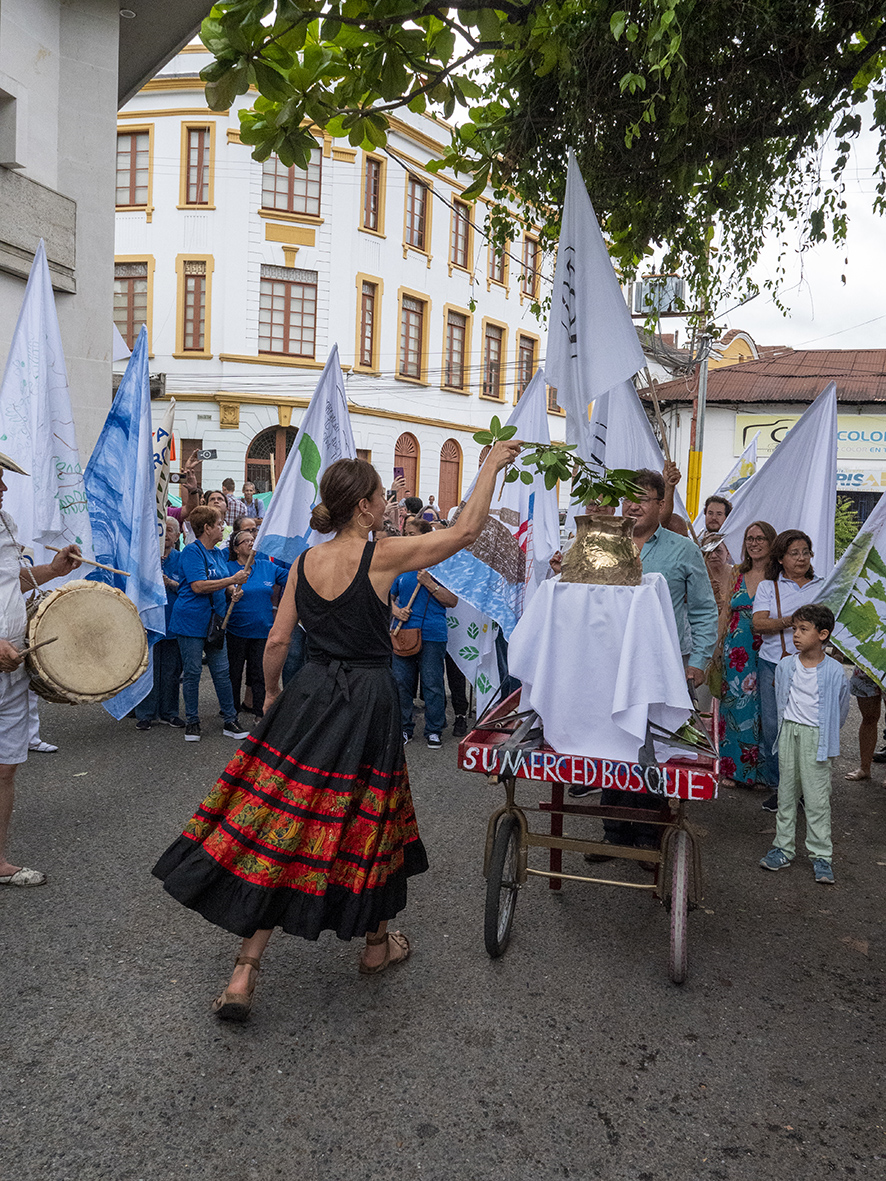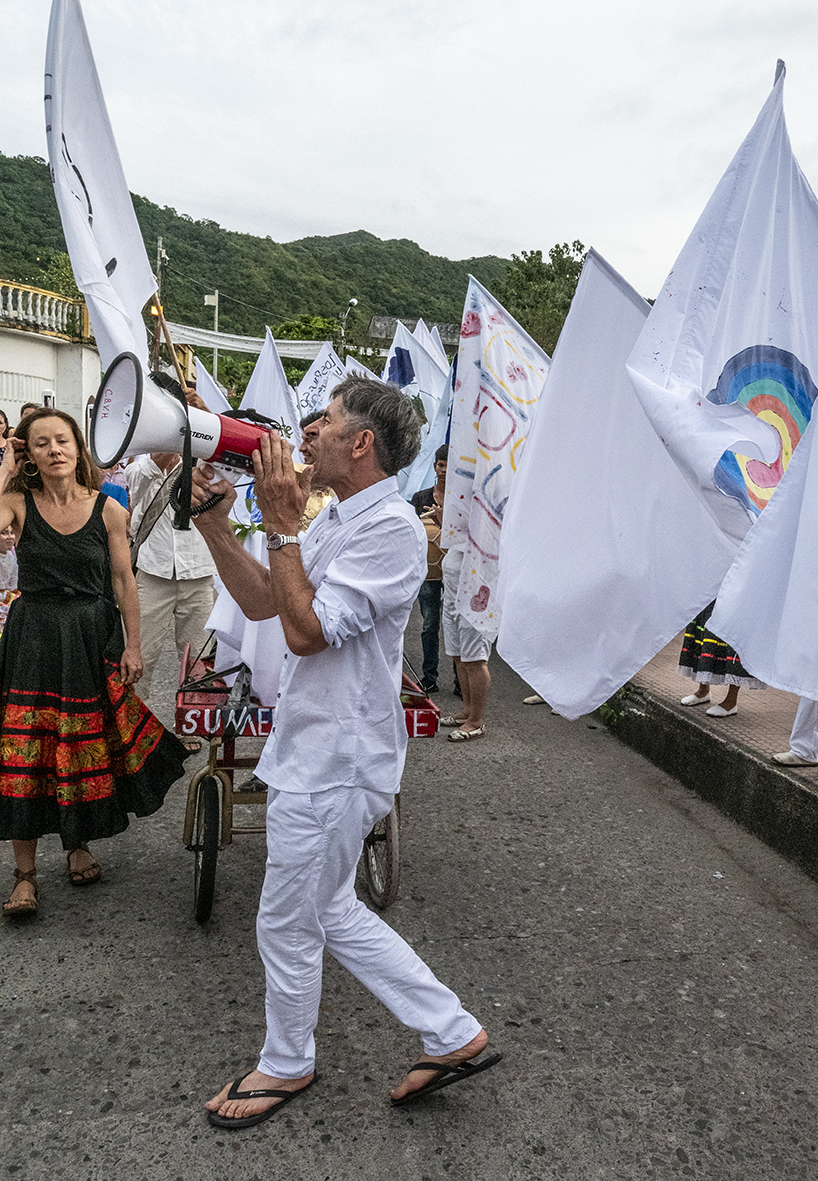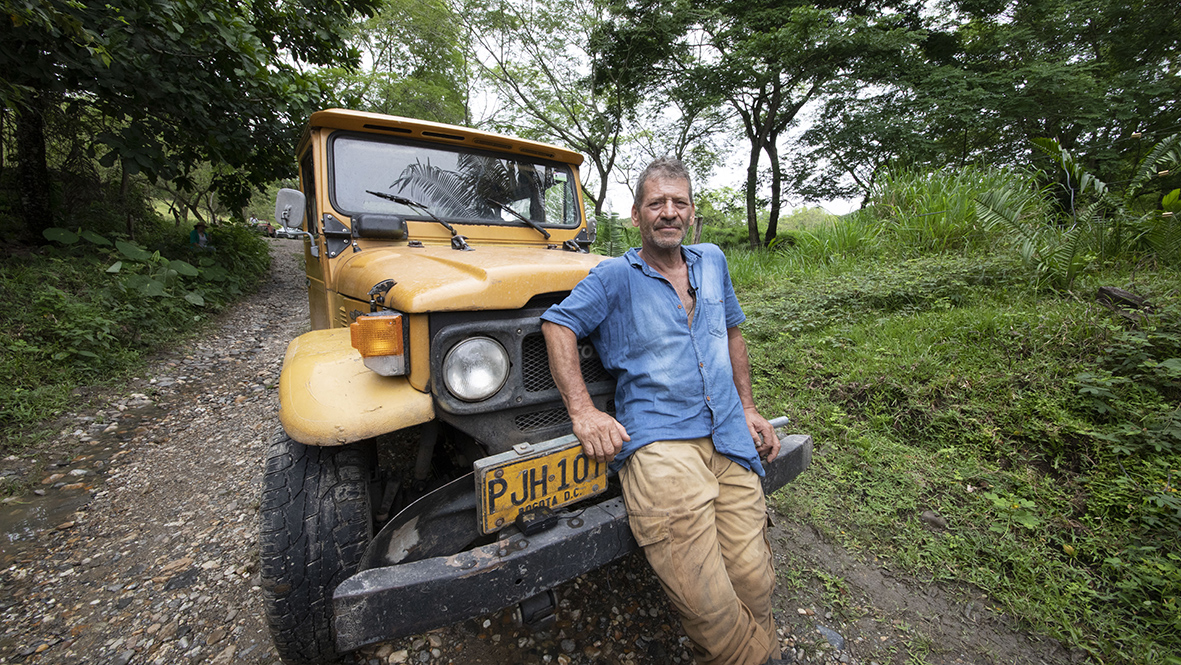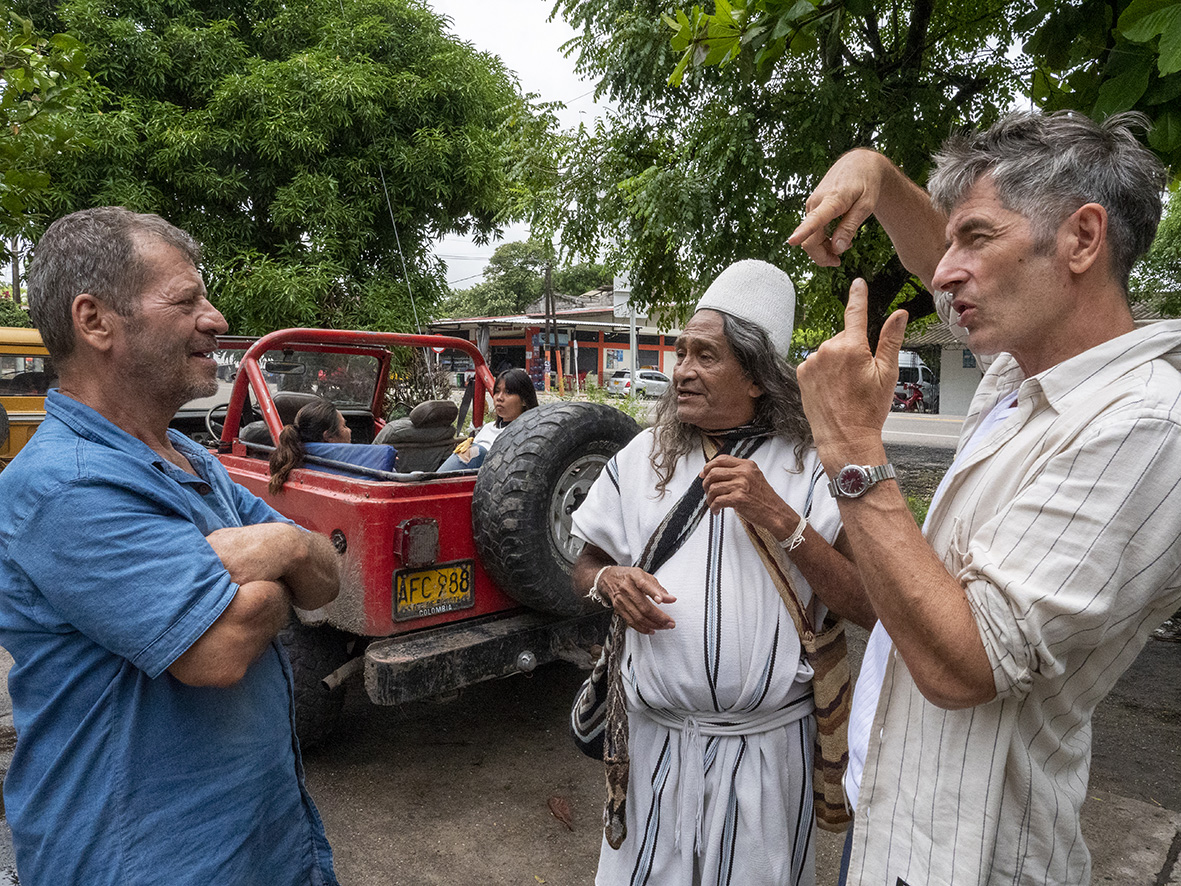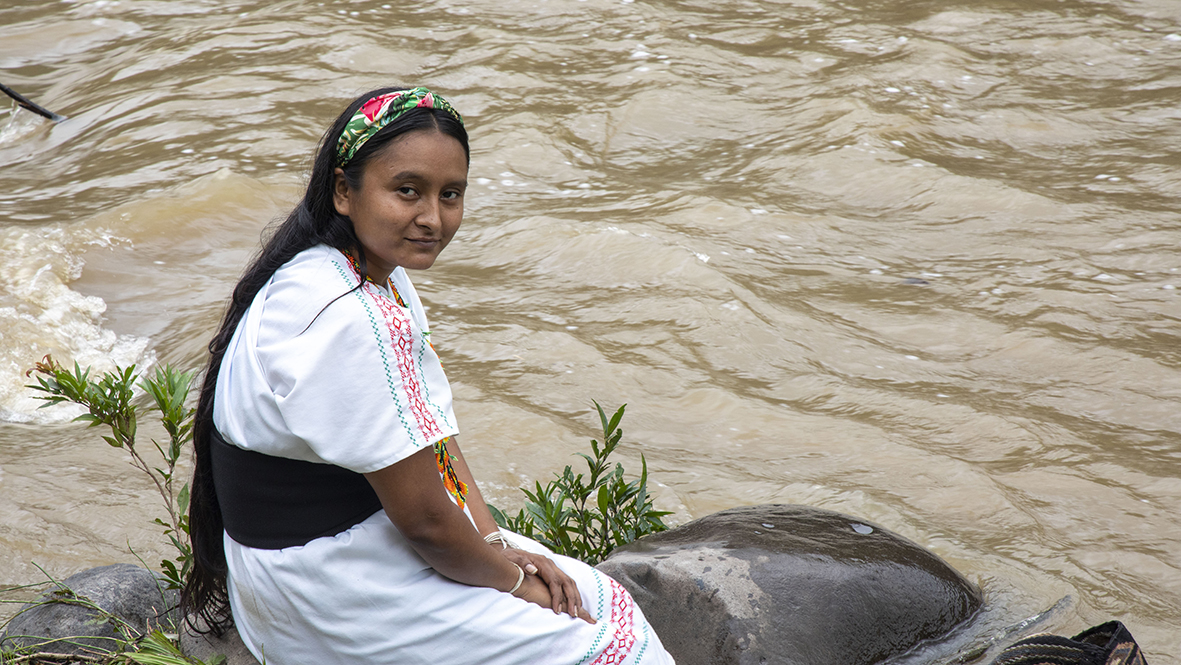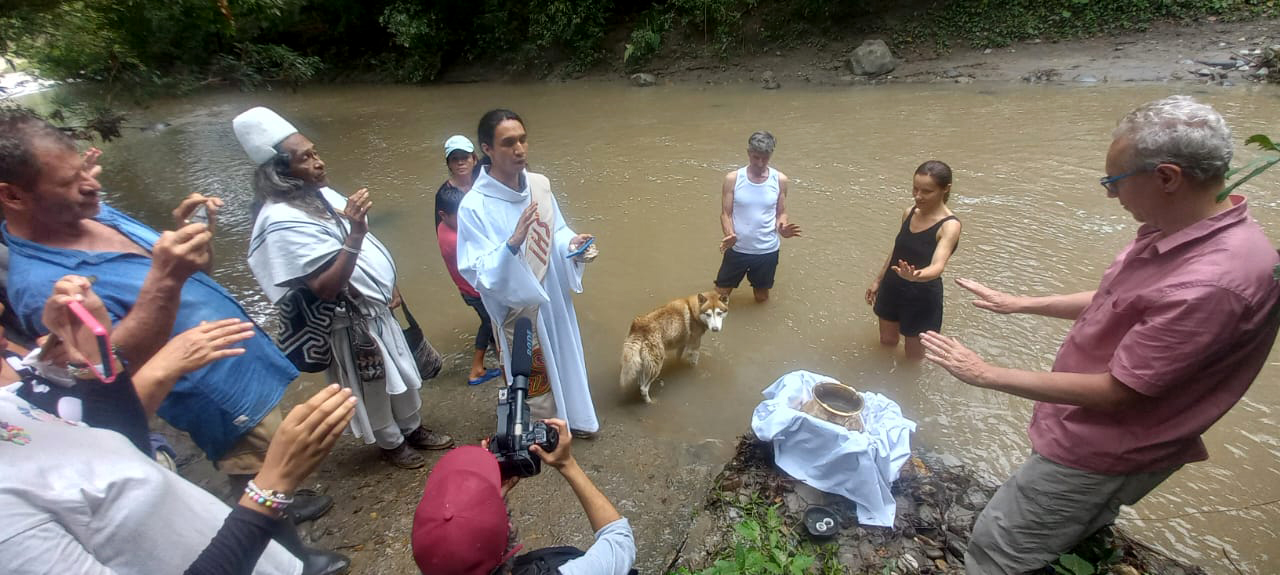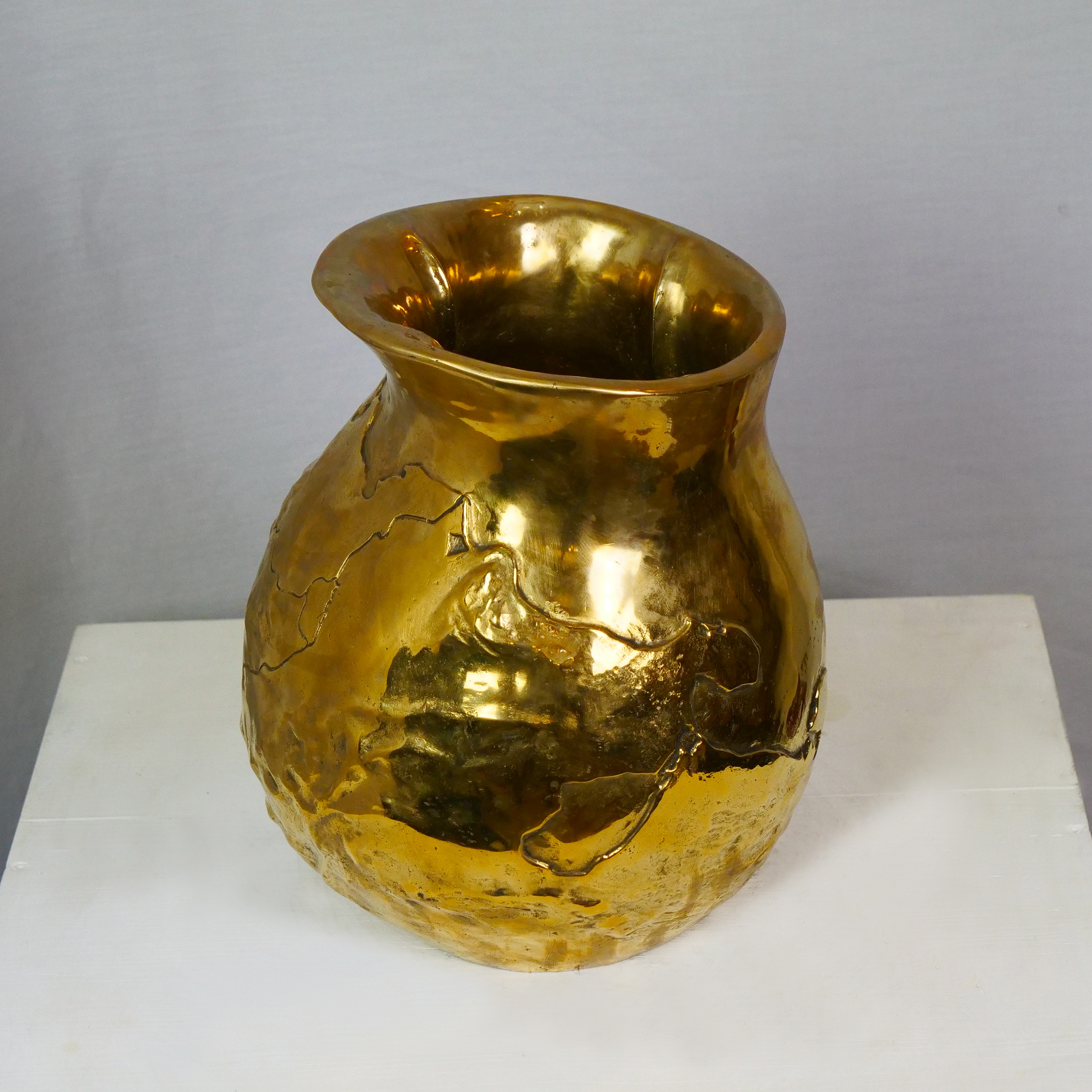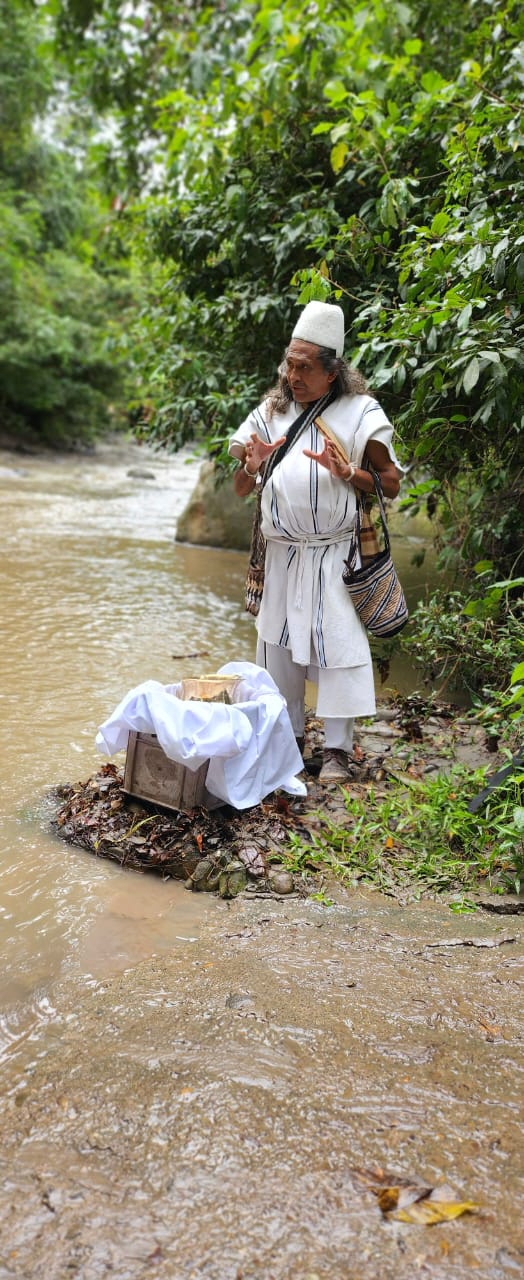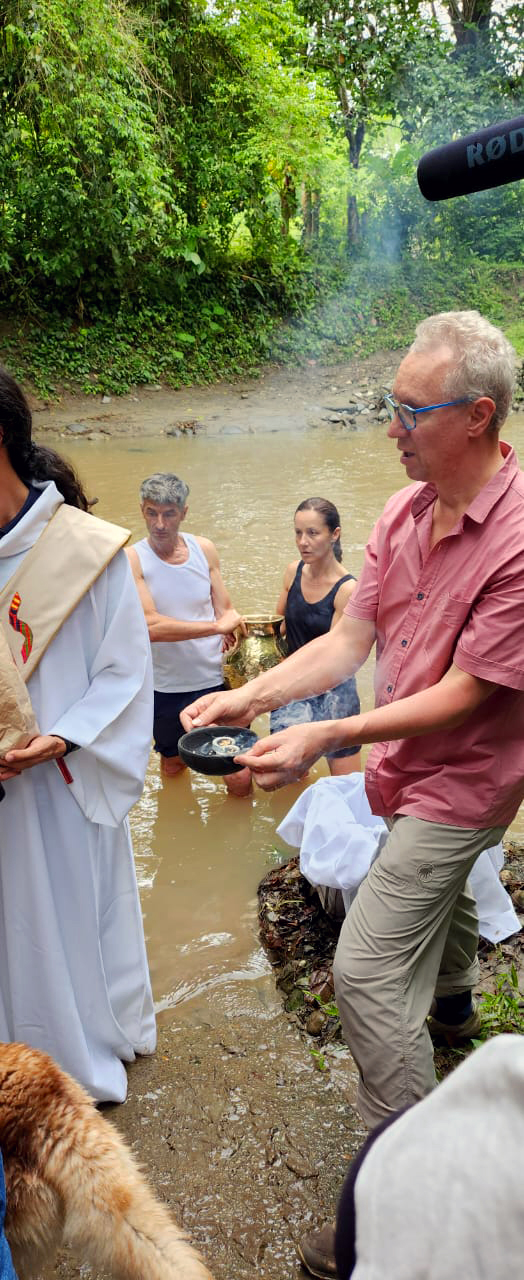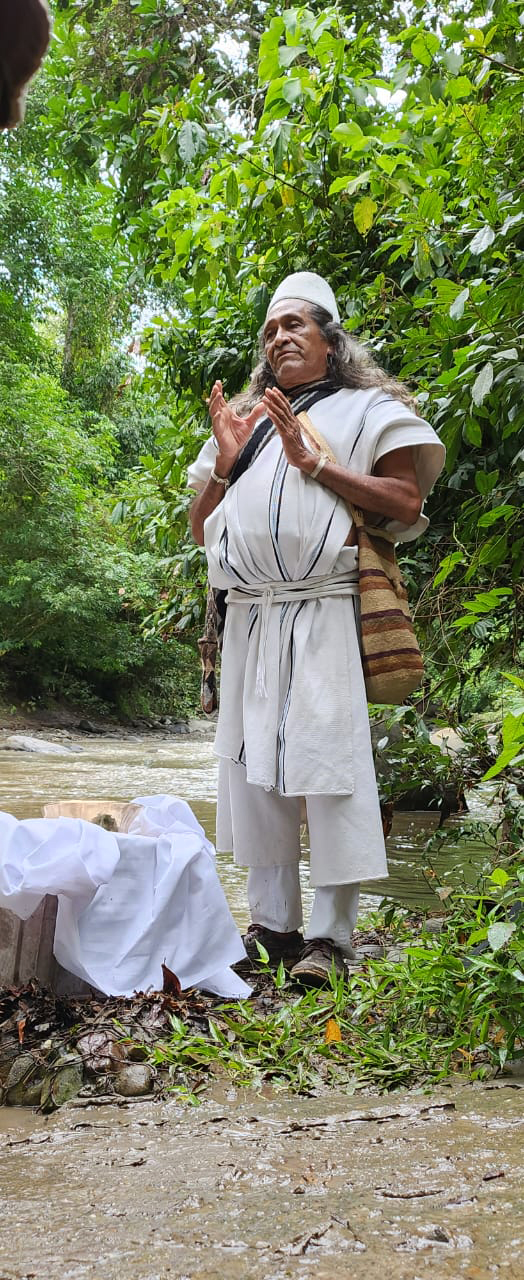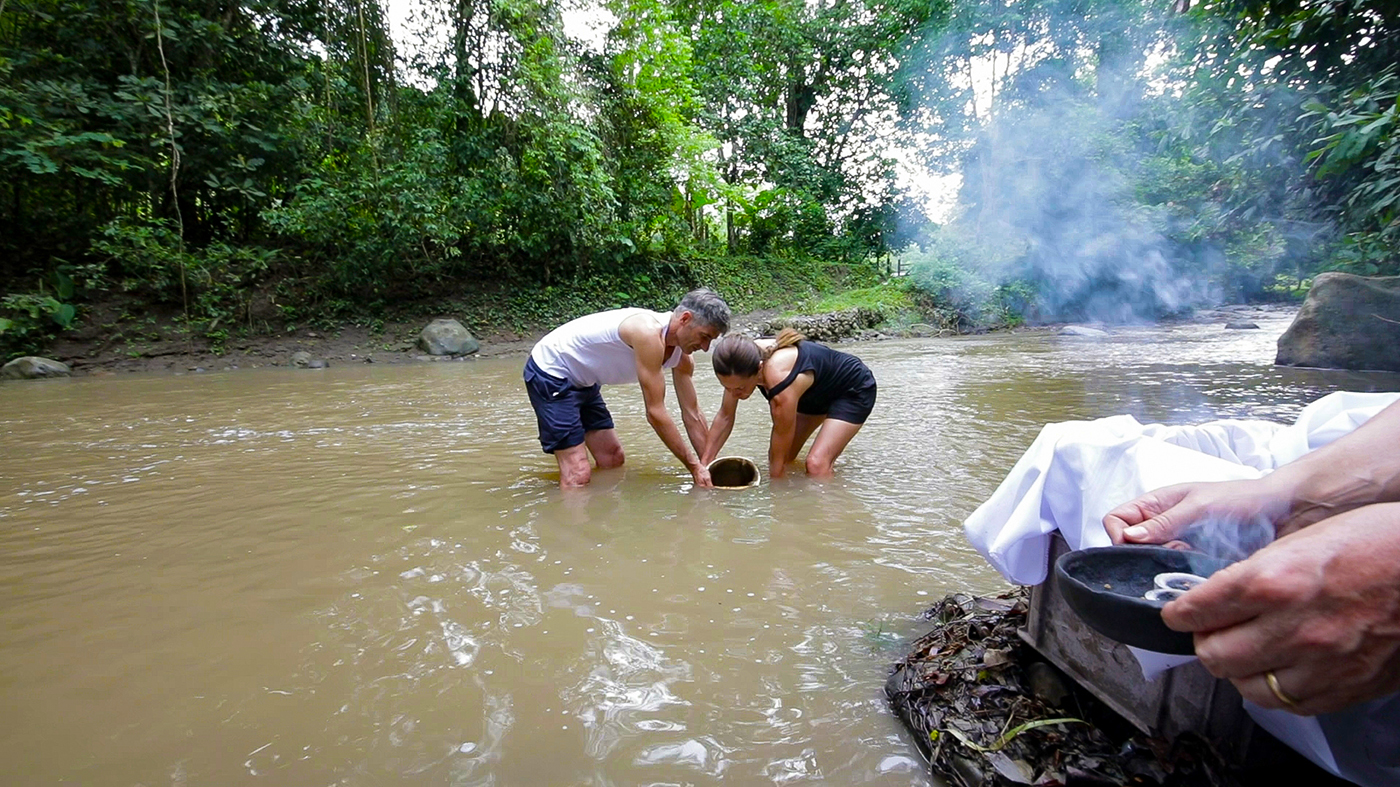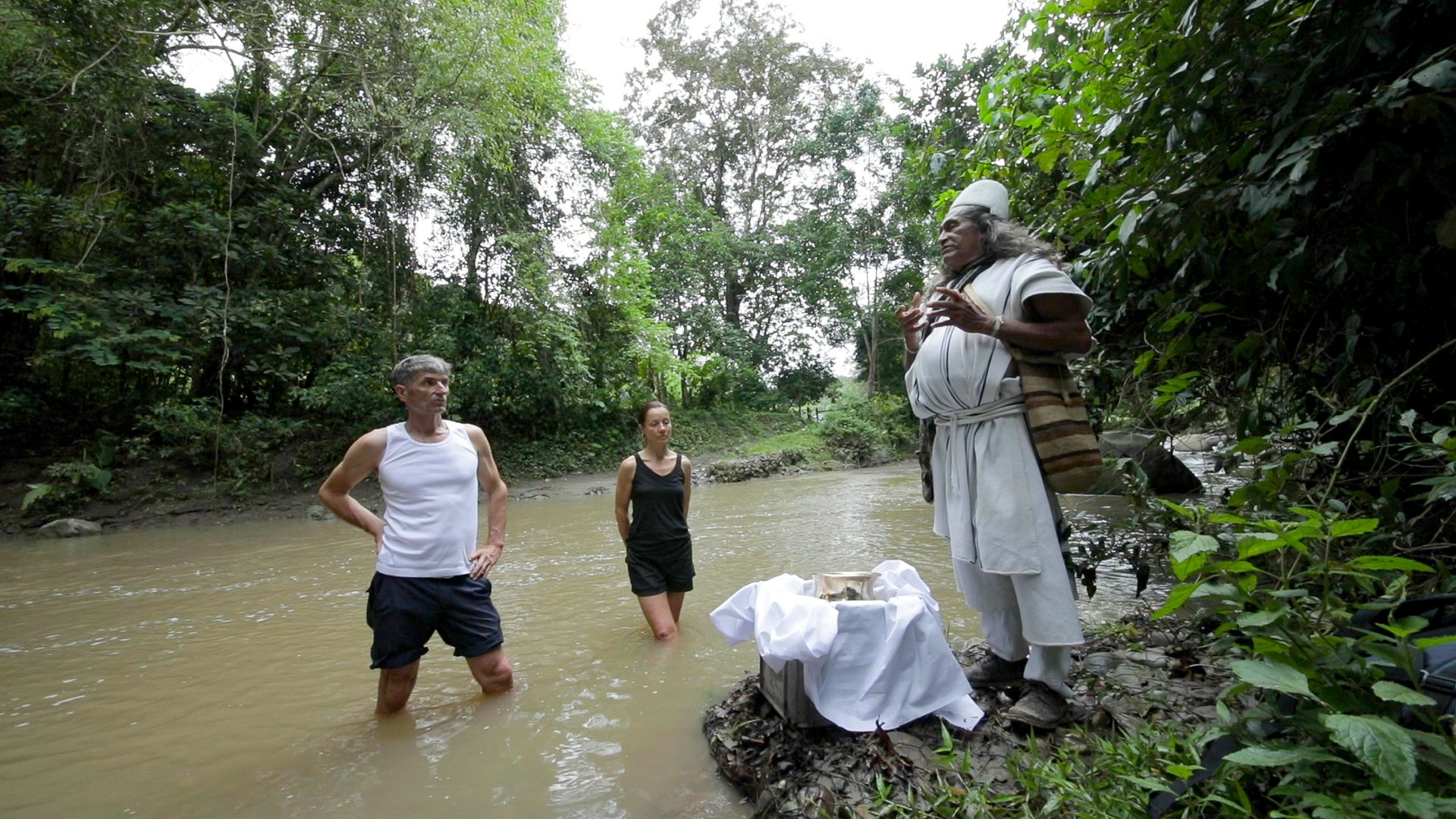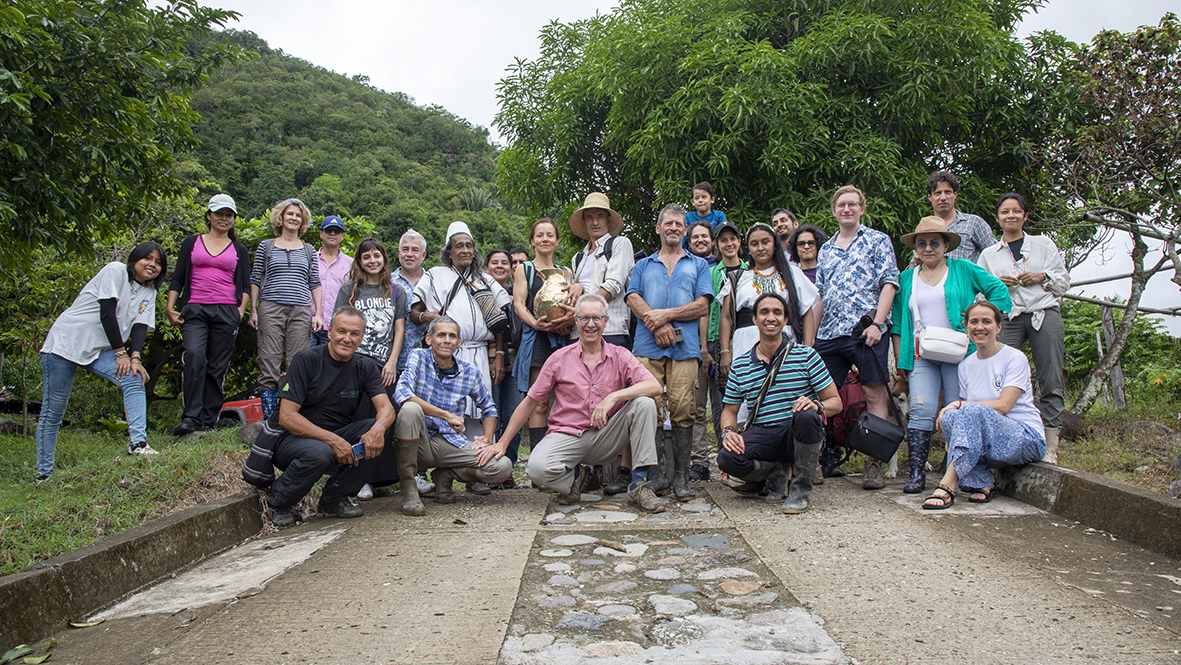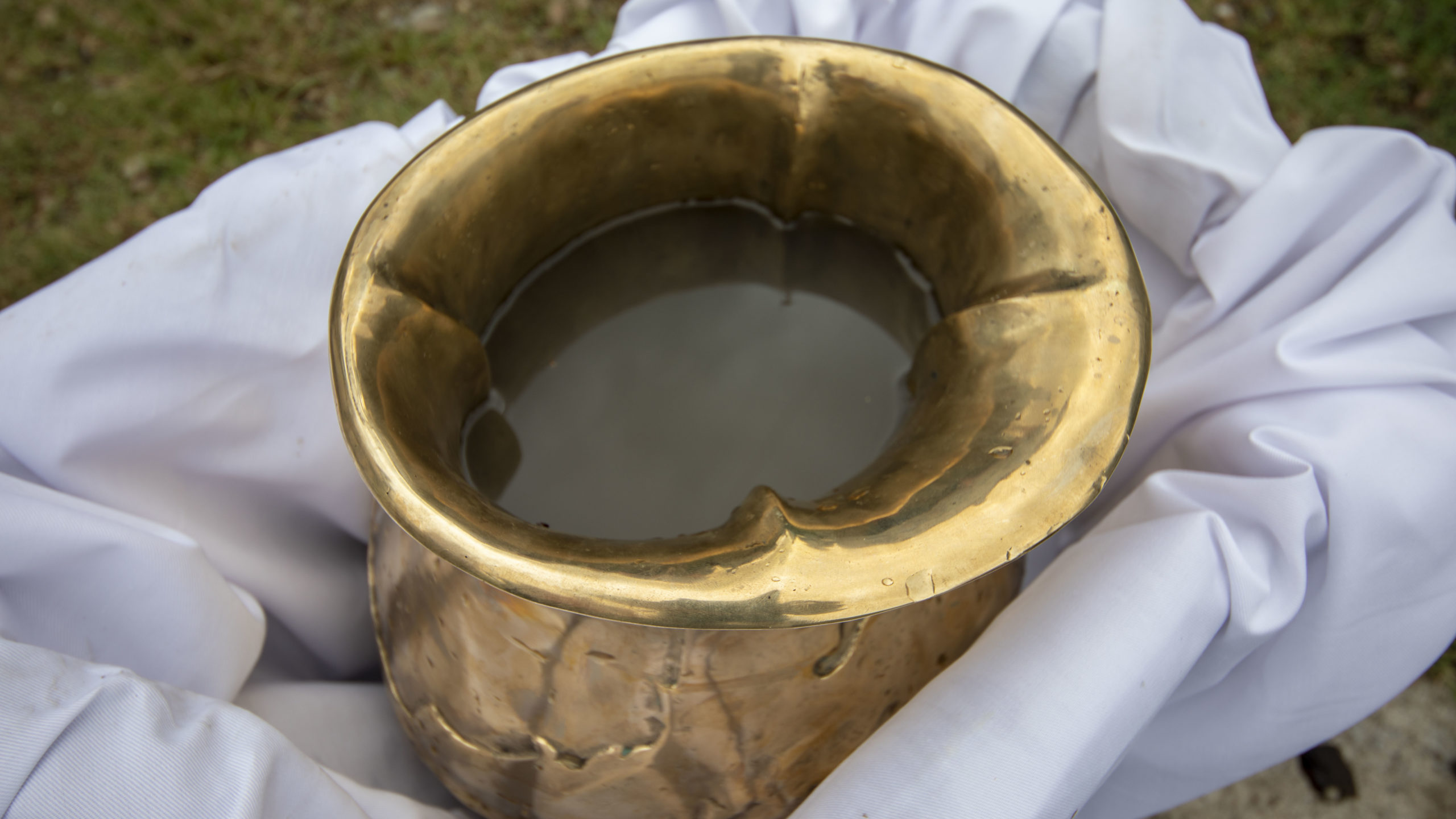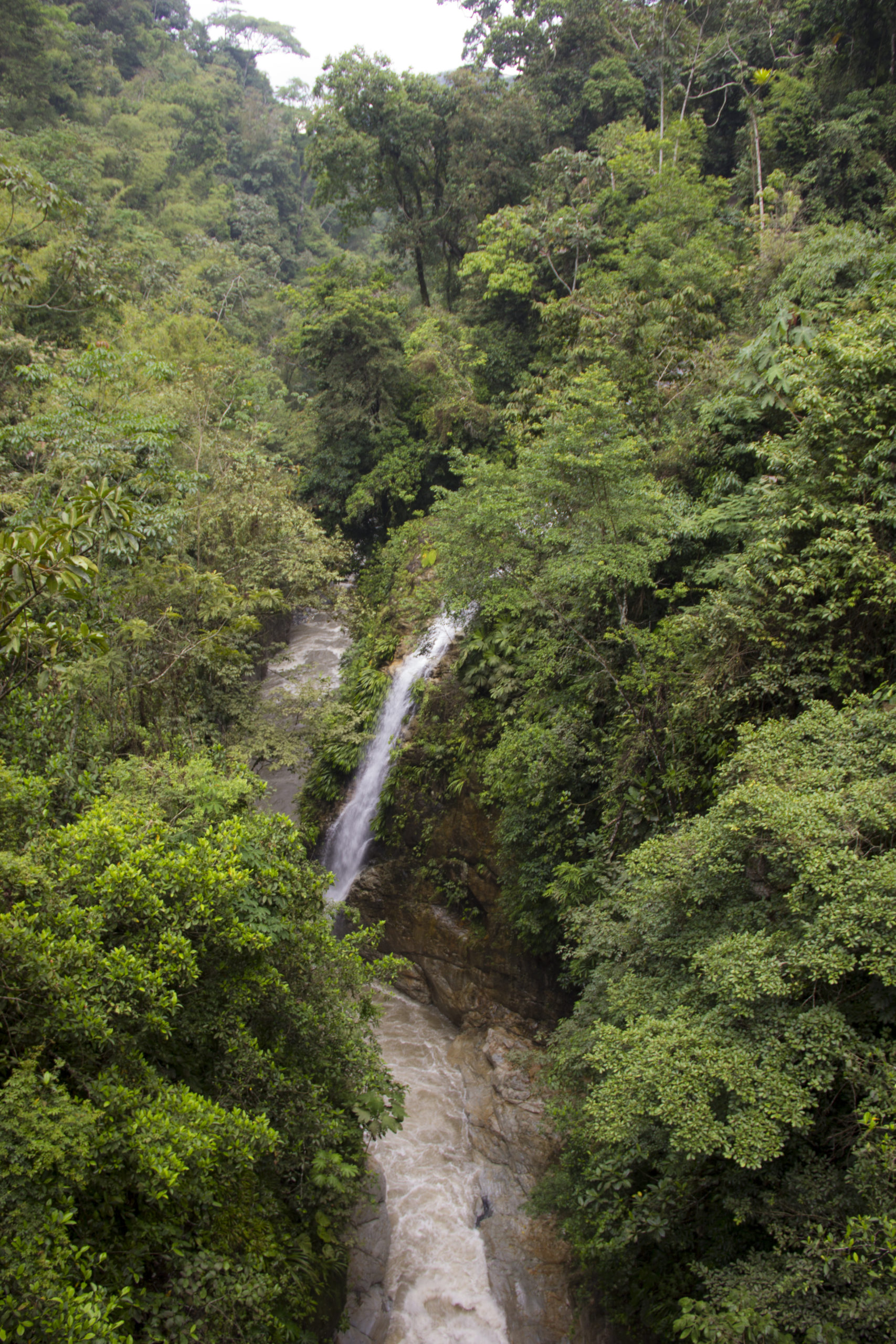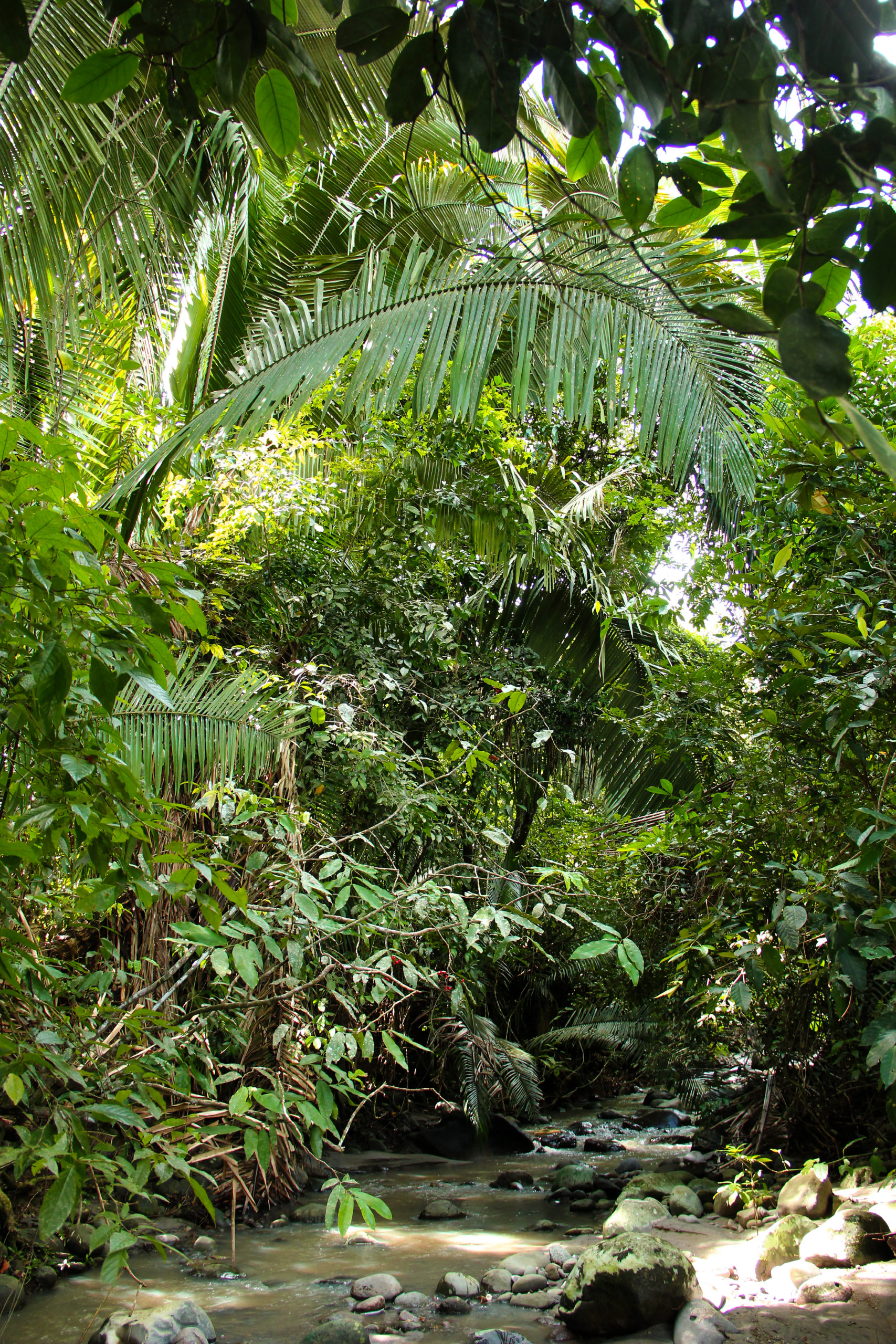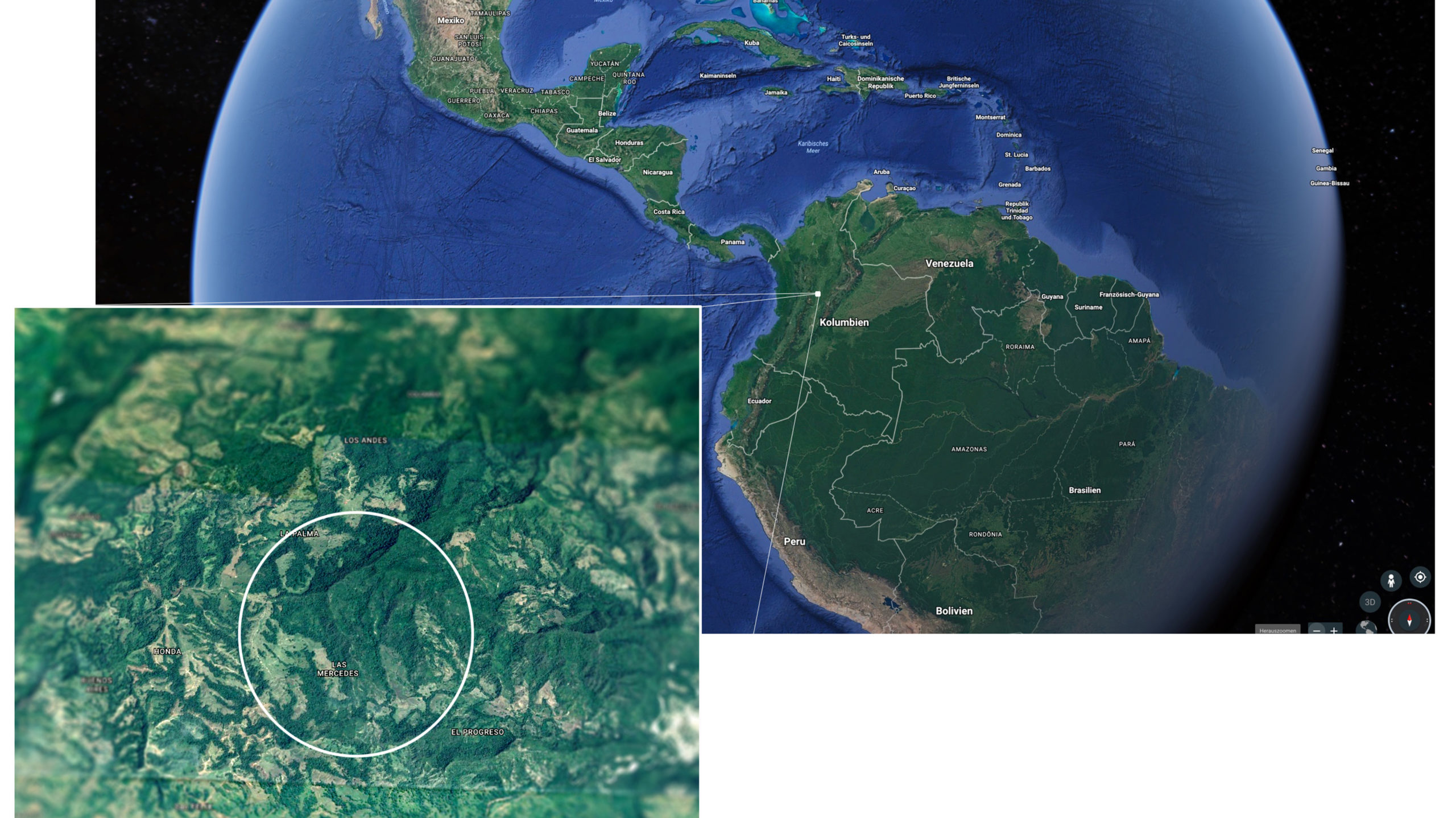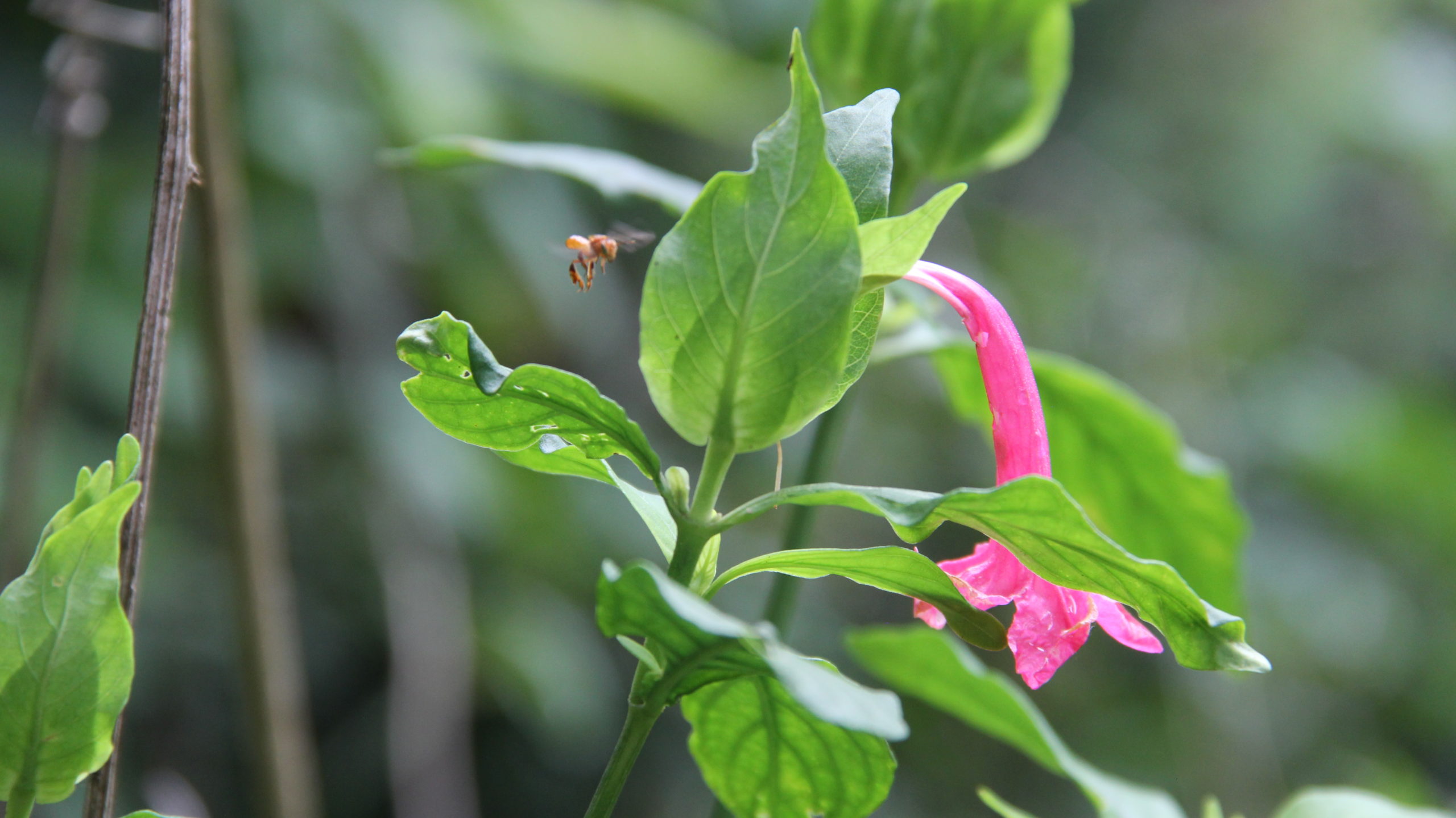LAS MERCEDES RESERVA NATURAL DE LAS AGUAS
The climate protection and art project of the ÖIN,
of the BOKU Vienna and ArtEmbassy
THE PURPOSE. The main goal of the Las Mercedes project is to save and protect a rainforest area in the heart of Colombia in South America through Art, Activism and Carbon Offsetting.
THE VISION. Las Mercedes provides space for local sustainable developmentto create alternative income and wealth and to build innovative scientific laboratories. Las Mercedes is more than just a project, it is a visionary idea that beautifully brings together people from different walks of life to create an ideal model for positive sustainable change in the world.
COOPERATION. We invite you to get to know our project better and maybe even participate in it. The purchase of CO2 certificates is a real form of participation to protect this forest in the heart of Colombia.
In the heart of Colombia, in the lowlands between Bogotá and Medellín, lies the small farm Las Mercedes. Nestled between table mountains, it is home to one of the last "Bosques Secos Tropicales" in the entire central region. The tropical dry forest is full of bubbling springs, protected plants and home to many endangered animals.
But this idyll could soon be destroyed. Deforestation and intensive grazing threaten entire areas. The artists Emmerich Weissenberger and Nora Ruzsics, the researchers Alfred Strigl and Sylvia Brenzel and their Colombian partners want to prevent this. The team at the Austrian Institute for Sustainable Development is working to preserve this magical and beautiful world.
Together with Dominik Schmitz and the University of Natural Resources and Applied Life Sciences Vienna, they founded the climate protection and art project on a core area of over 500 hectares. The Bogotá-based foundation "Fundación Las Mercedes - Reserva Natural de las Aguas" serves as the hub.
Together with the local people, the ganaderos, the small farmers and the indigenous population, it is developing a model for sustainable land use step by step. Instead of cows, small herds of buffalo graze among the trees. This is because buffalo are optimally adapted, improving soil life and biodiversity. A tree nursery for reforestation serves agroforestry. The tropical forest gardens bring joy and benefit to people and wildlife.
Nora Ruzsics and Emmerich Weissenberger understand this as their artistic credo. They actively carry on Josef Beuys' "social sculpture" or Michelangelo Pistolettos' "Terzo Paradiso".
With the help of the University of Natural Resources and Applied Life Sciences in Vienna, the Universidad Javeriana de Bogotá, the Fundación Iguaraya and the indigenous people of the Arhuacos, the protected area grew thirty-fold from the first core area to over 18,000 hectares. Now, areas in northern Colombia are also being included.
Las Mercedes' work is built on four pillars. The project is an Art project. Here, a dreamed vision becomes an actual reality. Secondly, the project is a research project. In cooperation with universities, climate, forest and water protection are actively pursued. Thirdly, Las Mercedes is economically oriented. It demonstrates that environmental protection and economic calculation can go hand in hand. And fourthly, the project is a social project that works directly with the people on a good life for all - on "buen vivir".
Ultimately, according to the artists and researchers, it is about the discovery and perpetual rediscovery of beauty, truthfulness and goodness.


